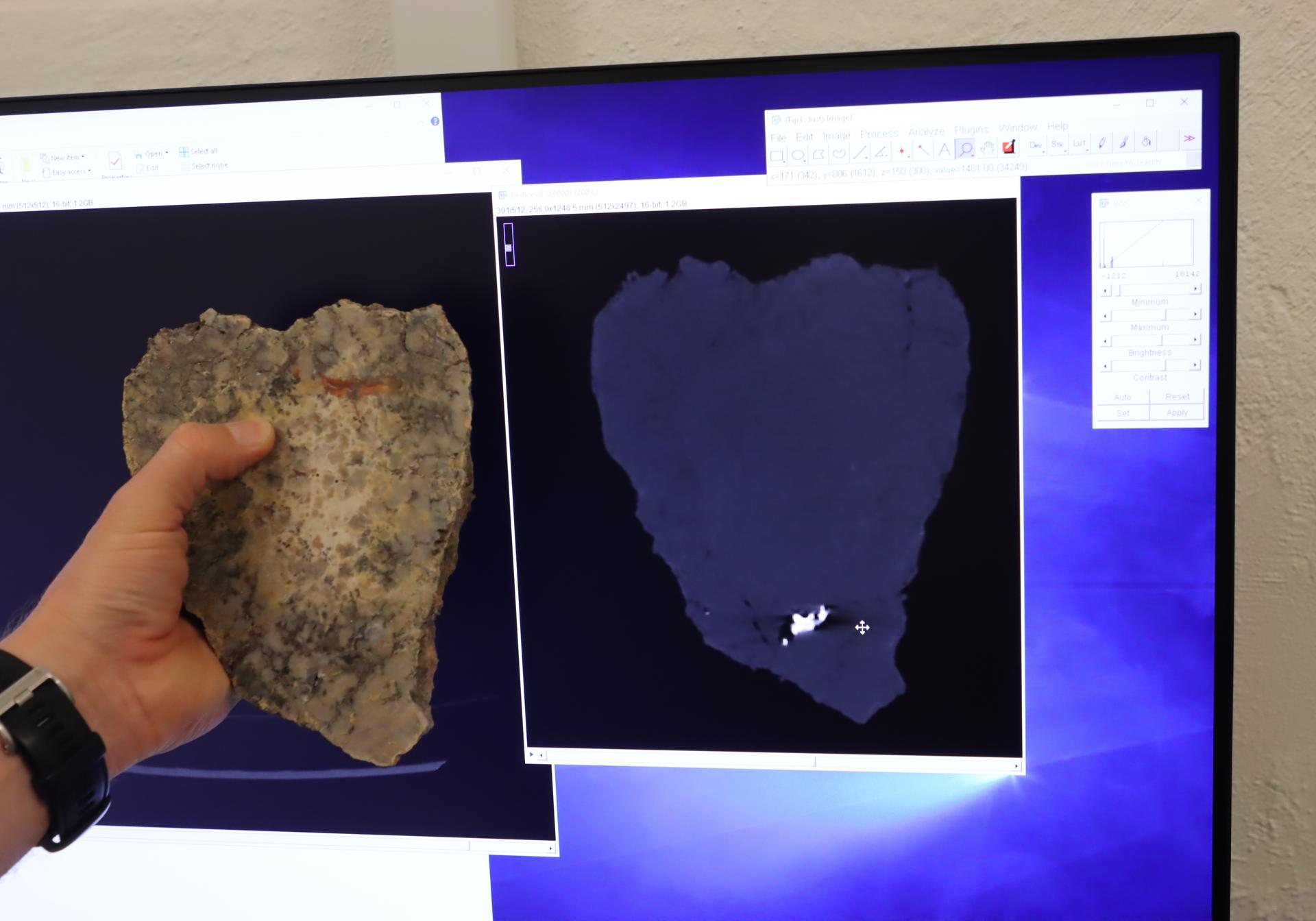October 22, 2024
Museum Peeks Inside 150-Million-Year-Old Dinosaur Dung

Fifteen fossilized dinosaur droppings from the Museum of Evolution have been X-rayed at Aarhus University to uncover traces of the past. One particularly remarkable fossil reveals its owner was a herbivore—and possibly identifies the dinosaur responsible.
The Museum of Evolution in Knuthenborg, Lolland, has taken the concept of "guess the poo" literally, X-raying fossilized dinosaur droppings, also known as coprolites, dating back 150 million years to better understand their origin.
"When we received them at the Museum of Evolution, we only knew they were fossilized droppings from large dinosaurs that lived in what is now Wyoming, USA. So, we had them scanned to look for bone or plant remains to identify the species responsible and what it ate," explains Christoffer Knuth, director of the Museum of Evolution.
The museum was especially excited by the scan results of the largest coprolite, measuring 15 x 15 cm and weighing as a really heavy rock. The findings were shared with Jesper Milàn, a museum curator at Geomuseum Faxe and a leading expert on fossilized dung.
"In the scan, I could see what appears to be a chewed piece of plant material, which aligns well with our knowledge that herbivorous dinosaurs had varied diets of leaves, branches, bark, and even rotting wood. It's a fantastic glimpse into a dinosaur's diet and a relatively new way to investigate this through X-rays," says Jesper Milàn.
This discovery gave the museum an important clue about the dinosaur responsible.
"Finding plant material in the dung tells us it belonged to a herbivore. Based on the size and diet, we know two strong candidates for this area during that time," explains Christoffer Knuth.
He points to Camarasaurus, a long-necked dinosaur, and Stegosaurus, known for its large back plates, as potential culprits. Both lived during the Jurassic period 150 million years ago.
"Given the contents of the meal and the dinosaurs present in Wyoming during that period, it's quite plausible that the dung came from either a Camarasaurus or a Stegosaurus," Knuth adds.
Fossilized Dung: A Treasure Trove of Knowledge
The fossilized dinosaur droppings vary in surface texture, color, and size, ranging from five to 30 cm in length.
They offer a unique glimpse into a different aspect of dinosaur life compared to what can be learned from fossilized bones.
"Dinosaur dung is an underrated fossil, but it tells important stories about the Jurassic ecosystem and dinosaur diets. It's relatively new to realize just how much knowledge is locked inside coprolites, which can be revealed through X-ray scans. Since dinosaur intestines rotted away long ago, these droppings are treasure chests of information about their digestive systems and diets," says Knuth.
For Aarhus University’s micro-CT scanner team, this project was a unique challenge.
"We've previously worked on scanning fossils to uncover their internal structure, but this is the first time we've examined fossilized dinosaur dung. Using X-ray technology, we could study the internal details without damaging the fossils or their 150-million-year history," says Associate Professor Henrik Lauridsen of Aarhus University.
All 15 fossilized dinosaur droppings are now on display at the Museum of Evolution in Knuthenborg, Lolland.
Images and video approved for media use.
©Museum of Evolution / ©Evolutionsmuseet
